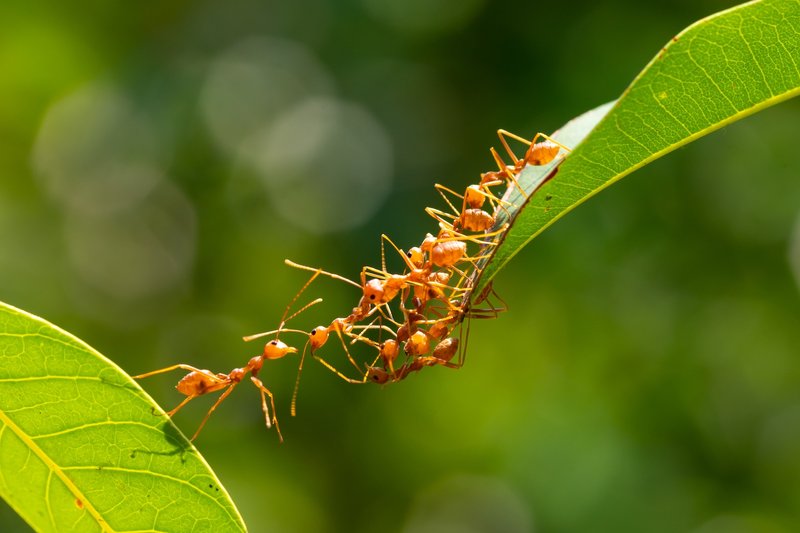
Ant lion larvae are fascinating little critters that play an important role in ecosystems. You might be surprised to learn that they have a dramatic transformation ahead of them that takes them from sneaky hunters to graceful adults. Let’s dive into the world of ant lion larvae and uncover what makes them so intriguing.
What Are Ant Lion Larvae?
Ant lion larvae belong to the family Myrmeleontidae, which is a group of insects you might not hear about every day. Aren’t their names a bit whimsical? These larvae are the juvenile form of adult ant lions, and they mostly live in sandy or loose soil where they can dig their infamous pit traps.
So, what do these traps look like? Picture a small funnel made of sand—something like a tiny sandcastle, but one with a purpose. The larvae actually eat ants and other small insects that fall into these traps. Pretty clever, right? They wait at the bottom, ready to grab their meal as it tumbles down. This unique hunting method is part of what makes ant lion larvae so captivating.
Life Cycle of Ant Lion Larvae
The life cycle of ant lion larvae is a fascinating journey. It starts with the tiny eggs that the female lays in sandy soil. Once they hatch, the larvae emerge and begin their hunt for food. During this phase, they grow and molt several times, changing in size and appearance.
As they grow, these larvae become more skilled at building their traps. With each molt, they get better at creating the perfect pit to ensnare their meals. This phase can last several months, depending on the species and environmental conditions. Once they reach full maturity, they prepare for the next stage of their life.
Typically, the larvae will pupate, entering a cocoon-like state where they transform into their adult form. This stage can be quite lengthy, often taking several weeks. Finally, they emerge as delicate adult ant lions—quite a transformation from their early days as fierce little hunters!
How Ant Lion Larvae Hunt
Hunting is where the magic really happens for ant lion larvae. As they sit at the bottom of their pit traps, they use their keen senses to detect movement above. Here’s how it works: when an unsuspecting ant or bug wanders too close, the larva quickly strikes, pulling the prey down into the trap.
You might be wondering why they use this method. Well, it’s all about efficiency. Instead of chasing after their food, they create a system where prey comes to them. The larvae are skilled architects, using their mouths to create the perfect funnel shape.
Once their prey is trapped, they inject it with digestive enzymes that liquefy the insides, making it easier to eat. This feeding method is a great example of adaptation and survival—traits that help ant lion larvae thrive in their environments.
Where to Find Ant Lion Larvae
If you’re curious about where to spot ant lion larvae, look no further than sandy or loose soil, particularly in warm, dry areas. You might find them in gardens, beaches, or even in the forest floor.
When searching for these fascinating creatures, pay attention to the small funnels in the sand. If you see one, there’s probably an ant lion larva waiting patiently below. Keep in mind that they can be more active during warmer months, especially in the afternoon when the sun is out.
You can also find them in a variety of environments, from deserts to wetlands. This adaptability allows them to thrive in different locations, making them a truly remarkable part of the insect world.
The Role of Ant Lion Larvae in the Ecosystem
Ant lion larvae play an essential role in their ecosystems. As predators, they help control populations of ants and other small insects. This keeps the balance of nature intact, preventing any one species from dominating an area.
Their hunting methods also contribute to nutrient cycling within the soil. When they consume prey and their bodies decompose, they return nutrients to the earth, helping plants grow and thrive. It’s a cycle that illustrates the interconnectedness of life.
Moreover, adult ant lions also have their place in the food web. Birds and other predators enjoy snacking on them. So, while the larvae are busy capturing prey, they too have to be cautious about becoming someone else’s dinner!
Fun Facts About Ant Lion Larvae
Let’s round things off with a few fun facts about ant lion larvae that might surprise you:
- They’re not actually lions—despite their name, ant lions have no relation to the big cats.
- They can live for a long time—some larvae can take years to mature, especially in cooler climates.
- They have a unique shape—the larvae often look like little alligators, with their elongated bodies and large jaws.
- Their traps can be deadly—some larvae can capture prey much larger than themselves!
These little tidbits make learning about ant lion larvae a bit more fun and engaging. The more you know, the deeper your appreciation for these incredible creatures.
Final Thoughts on Ant Lion Larvae
Ant lion larvae are beautiful examples of nature’s ingenuity. From their clever hunting techniques to their critical role in ecosystems, they remind us how interconnected life really is. Next time you stumble upon a tiny sand trap in your garden or on a nature walk, take a moment to appreciate the hidden world below.
These predators may be small, but they play a big part in keeping nature balanced. So, whether you’re a budding naturalist or just curious about the wonders of the insect world, ant lion larvae are worth knowing more about. Happy exploring!

